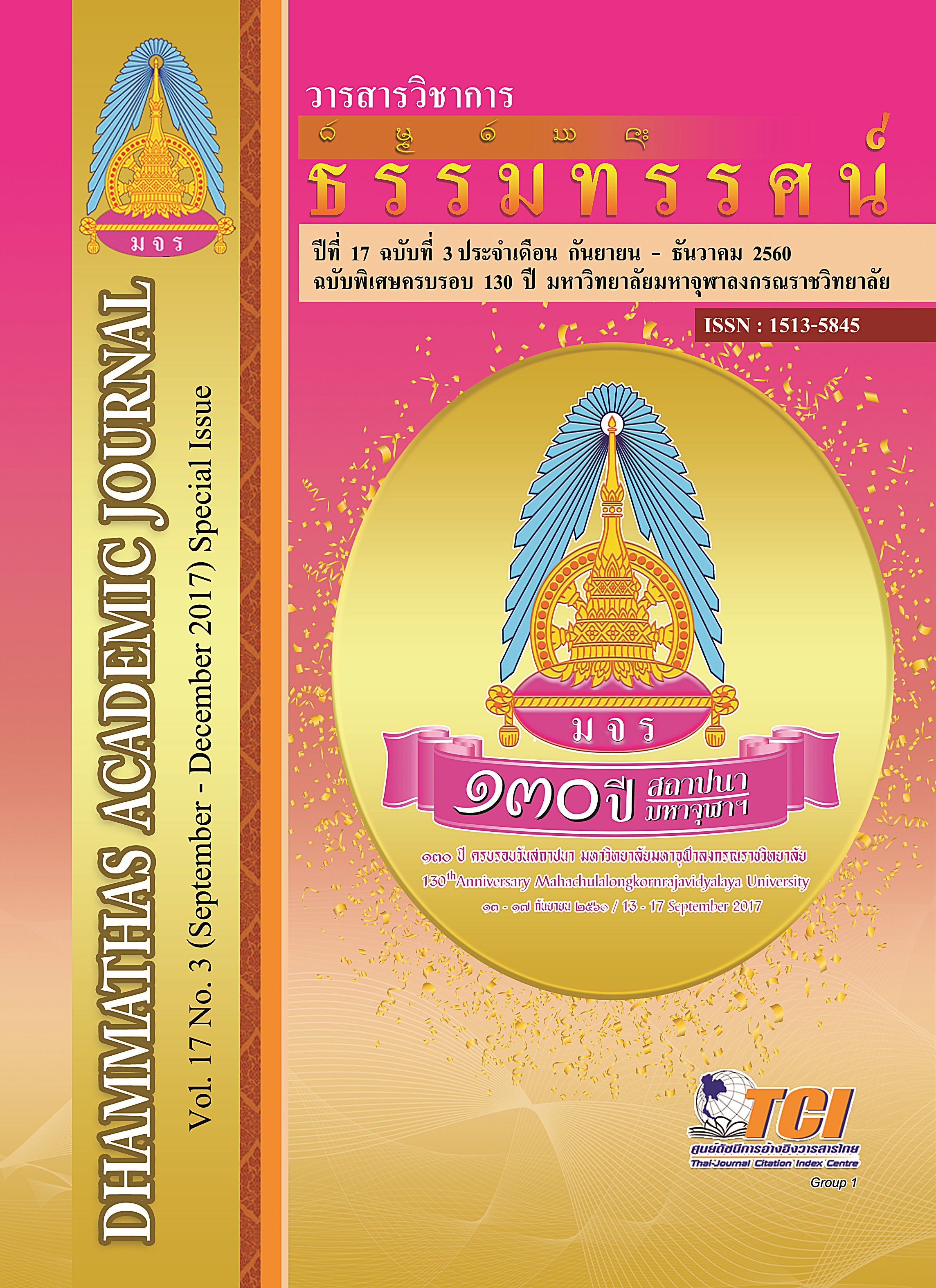A Linear Structural Relationship Model of Factors Influencing Integrative Leadership of Administrator Ecclesiastical Schools, General Education
Main Article Content
Abstract
The objectives of this research were: 1) to study the current situation of The objectives of this research were: 1) to study the current situation of linear structural relationship model of factors affecting the integrated leadership of administrators, Ecclesiastical Schools, department of general education, 2) to investigate the congruence of linear structural relationship model of factors affecting the integrated leadership of administrators, Ecclesiastical Schools, department of general education, constructed with empirical data by the researcher, and 3) to study the linear structural relationship model of factors affecting the integrated leadership of administrators, both of direct effect, indirect effect, and total effect of administrators, Ecclesiastical Schools, department of general education. The samples of this study were 780 staffs working in Ecclesiastical Schools, department of general education. The instrument using in this study was the questionnaire as 5 Level Rating Scale. The reliability of total issue was 0.98, IOC values were ranged between 0.8 to 1.00. Data were analyzed by using computer program. The research findings found were as follows: 1. The linear structural relationship model of factors affecting the integrated leadership of administrators, Ecclesiastical Schools, department of general education, consisted of 25 observable variables, 6 latent variables, and 8 variable results, total of 39 variables. 2. The investigation in fit of factors affecting the integrated leadership of administrators, Ecclesiastical Schools, department of general education, constructed with empirical data by the researcher, the analytic findings found that : 1) the Chi-square divided by degree of freedom (X2/DF) was 1.073. The Chi-square was 312.219 at degree of freedom (DF) was 291, 2) the probability value (P-value) was 0.188 (be statistically significant at 0.001 level) 3) the Goodness of Fit Index (GFI) and the Adjusted Goodness of Fit Index (AGFI) were 0.976, and 0.954 respectively, 4) the Normed Fit Index (NFI), Comparative Fit Index (CFI) were 0.993, and 1.000 respectively, and 5) the Root Mean Square Error of Approximation (RMSEA) was 0.011. 3. The factors with the most direct effect on Integrated Leadership (INLE) at 0.001 level, was Information Communication and Technology (ICT). The positive effect was 1.000. The second order was the Morality (MORA), the effect was 0.571. The effect of Administrators’ Behavioral (ADBE) was 0.228. The effect of Transformation (TRAN) was -0.710. The negative effects were the Creativity Thinking (CREA). The effect was -0.084.

